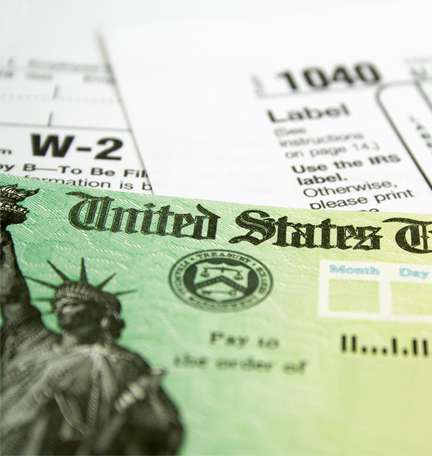What is Identity Theft?
There are various types of scams and ways that a criminal may use account information fraudulently, normally for account takeover only. Account takeover occurs when a fraudster obtains account information to perpetrate fraud on existing accounts. Account takeover is very different from identity theft.
Identity theft occurs when someone uses personal identifying information, like a name or Social Security number, without permission to commit fraud or other crimes, such as opening new accounts, taking out credit and/or purchasing goods or services in the victim’s name.
Identity theft is a crime that can have substantial financial and emotional consequences. Act immediately to minimize the damage.
Ways that identity theft is perpetrated:
- Dumpster diving/shoulder surfing. Fraudsters rummage through trash looking for bills or other paper with personal information on it. Fraudsters also look over people’s shoulders while they are on the computer or completing documents with personal information.
- Phishing. Fraudsters pretend to be financial institutions or companies and send spam or pop-up messages to get victims to reveal their personal information.
- Old-fashioned stealing. Fraudsters steal wallets and purses, bank and credit card statements, pre-approved credit offers and new checks or tax information. They steal personnel records or bribe employees who have access.
- Pretexting. They use false pretenses to obtain your personal information by posing as financial institutions, telephone companies and other sources.
What can I do to protect myself?
It is very important for consumers to take action to protect their identities. Below are the most common suggestions. However, it is important to research all alternatives and make sure to stay up to date with the latest trends.
- Protect your Social Security number. Don’t carry Social Security numbers in wallets or write Social Security numbers on checks.
- Take advantage of internet security features. Passwords and other security features add layers of protection if used appropriately. Maintain antivirus software and firewalls on your computer.
- Treat your trash and mail carefully. A thief may pick through trash and recycling bins to capture personal information. Always shred charge receipts, copies of credit applications and personal documentation.
- Select intricate passwords. Use passwords on credit cards, bank accounts and phone accounts. Avoid using easily available information.
- Verify sources before sharing information. Don’t give out personal information on the phone, through the mail or on the internet unless you initiate the contact and verify with whom you are communicating.
- Safeguard your personal information. Protect purses and wallets at all times. Keep personal information in a safe place at home or while traveling.
- Research identity theft insurance. Although insurance won’t deter identity thieves, in certain circumstances it can minimize losses if an identity theft occurs.
- Monitor your existing credit card and bank accounts. Look for any charges you do not recognize.
- File your taxes early. File as soon as you have the tax information you need before a scammer uses your Social Security number to get a tax refund.
What can I do if I think, or know, that my identity has been stolen?
To minimize the extent of the damage, you should take action as soon as possible:
- Contact companies and banks where you have accounts. Inform them that someone may be using your identity, and find out if there have been any unauthorized transactions. Close accounts so that future charges are denied.
- File a report. File a report with the police so you have an official record of the incident. You can also file a complaint with the Federal Trade Commission (FTC).
- Contact credit reporting companies. Check your credit report with Equifax, Experian and TransUnion to see if there has been unexpected or unauthorized activity. Place a free, one-year fraud alert on your credit reports by contacting one of the three credit bureaus. That company must tell the other two. See the FTC’s instructions for how to Place a Fraud Alert.
- experian.com/help or 888-EXPERIAN (1-888-397-3742)
- transunion.com/credit-help or 1-888-909-8872
- equifax.com/personal/credit-report-services or 1-800-685-1111
- Freeze your credit. Request a credit freeze from each credit bureau. You will be given a PIN that will be required to un-freeze your account. For more details on any potential charges for this service, the FTC provides credit freeze FAQs.
- Consider other information that may be at risk. Depending on what information was stolen, you may need to contact other agencies. For example, if a thief has access to your Social Security number, contact the Social Security Administration. If your driver’s license or car registration has been stolen, contact the Department of Motor Vehicles.
How does Regions respond to identity theft?
Regions Bank takes identity theft seriously. If you believe your Regions Bank account information may have been compromised via identity theft or, or if you are not a Regions customer but an account has been opened in your name, we offer a Regions Identity Theft Kit (en Español) that can assist in clearing your record. Victims can call 1‑800‑REGIONS (1-800-734-4667) for assistance.
More insights on www.regions.com:
- How to Report Identity Theft
- How to Prevent Child Identity Theft
- Identity Theft: Protecting Your Personal Information at Home
The following sites offer additional information and guidance to protect against identity theft:
The information presented is general in nature. Regions reminds its customers that they should be vigilant about fraud and security, and that they are responsible for taking action to protect their computer systems. Fraud prevention requires a continuous review of your policies and practices, as the threat evolves daily. There is no guarantee that fraudulent transactions will be prevented or that related financial losses will not occur.





